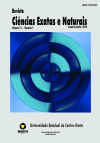Programação em duplas: estado da arte
Palavras-chave:
Aprendizado Cooperativo e Colaborativo, Ambiente de Aprendizado Distribuído, Programação em DuplasResumo
Resumo: Programação em Duplas (Pair Programming – PP) é uma prática colaborativa de desenvolvimento de software em que dois programadores trabalham ao mesmo tempo em um único computador e na mesma tarefa de programação. Foi relatado na literatura que o conhecimento sobre PP encontra-se disperso e desorganizado. Com o intuito de colocar um pouco de ordem a esse caos, o presente estudo realizou uma busca exaustiva de trabalhos sobre PP em algumas das bibliotecas digitais mais importantes do mundo em Ciência da Computação (Sociedade Brasileira de Computação, ACM, IEEE Explore, Springer, CiteSeer e ScienceDirect, entre outras) e no Google/Scholar. A partir da completa leitura dos trabalhos encontrados, procurou-se definir temas chave dentro da área descrevendo todos os estudos que se relacionam com cada tema. Os achados são interessantes e extensos – eles podem ser encontrados durante toda a leitura do presente artigo.
Downloads
Publicado
Edição
Seção
Licença
Autores mantém os direitos autorais e concedem à revista o direito de primeira publicação, com o trabalho simultaneamente licenciado sob a Creative Commons Attribution License que permitindo o compartilhamento do trabalho com reconhecimento da autoria do trabalho e publicação inicial nesta revista.
Esta revista proporciona acesso público a todo seu conteúdo, seguindo o princípio de que tornar gratuito o acesso a pesquisas gera um maior intercâmbio global de conhecimento. Tal acesso está associado a um crescimento da leitura e citação do trabalho de um autor. Para maiores informações sobre esta abordagem, visite Public Knowledge Project, projeto que desenvolveu este sistema para melhorar a qualidade acadêmica e pública da pesquisa, distribuindo o OJS assim como outros software de apoio ao sistema de publicação de acesso público a fontes acadêmicas. Os nomes e endereços de e-mail neste site serão usados exclusivamente para os propósitos da revista, não estando disponíveis para outros fins.

